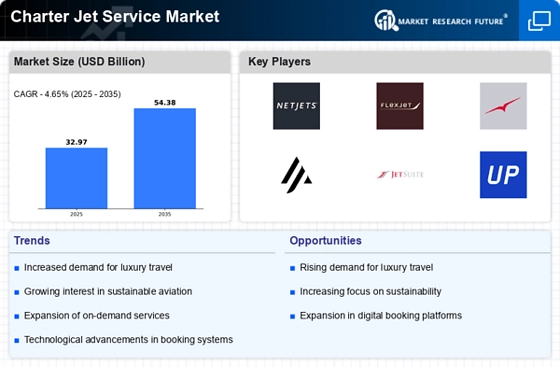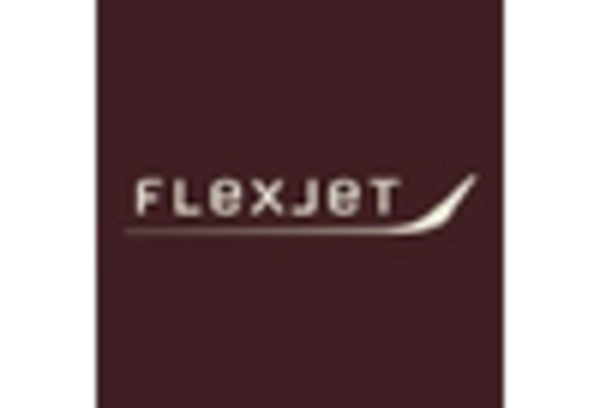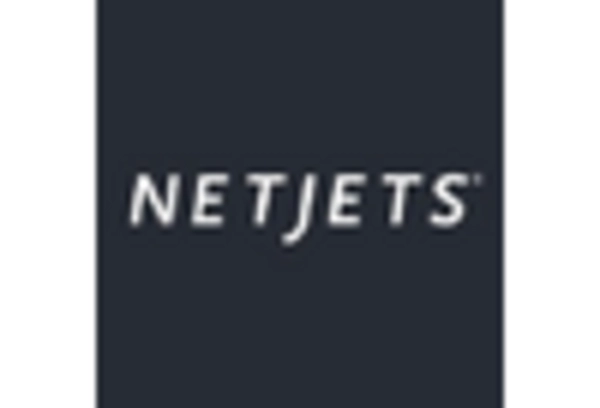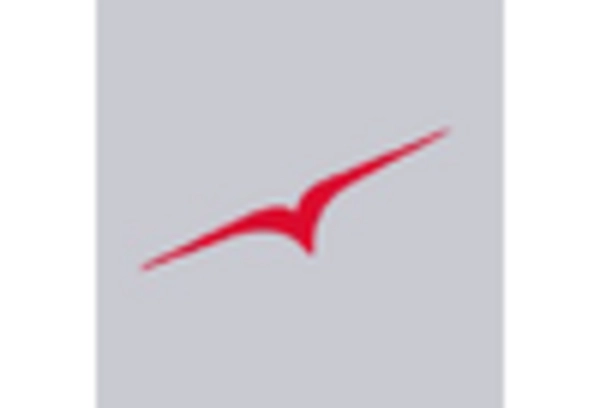Increased Business Travel
The Charter Jet Service Market is significantly influenced by the resurgence of business travel. Companies are increasingly recognizing the value of time and efficiency, leading to a rise in the use of charter services for corporate travel. Recent statistics indicate that business aviation accounts for nearly 70% of the charter flight market, highlighting its critical role. As organizations prioritize productivity and flexibility, the demand for on-demand charter flights is expected to grow. This trend may encourage charter operators to expand their fleets and improve service offerings, thereby enhancing the overall appeal of the Charter Jet Service Market.
Technological Innovations
Technological advancements are reshaping the Charter Jet Service Market, enhancing operational efficiency and customer experience. Innovations such as advanced booking systems, real-time flight tracking, and improved safety protocols are becoming standard in the industry. Furthermore, the integration of artificial intelligence and data analytics is enabling operators to optimize flight routes and reduce operational costs. As technology continues to evolve, it is likely to attract a broader customer base, including younger travelers who value seamless digital experiences. This shift may lead to increased competition among charter service providers, ultimately benefiting consumers within the Charter Jet Service Market.
Growing Environmental Awareness
The Charter Jet Service Market is increasingly influenced by growing environmental awareness among consumers. As sustainability becomes a priority for many travelers, charter operators are exploring eco-friendly practices to reduce their carbon footprint. Initiatives such as carbon offset programs and investments in fuel-efficient aircraft are gaining traction. Recent surveys indicate that approximately 60% of travelers are willing to pay a premium for sustainable travel options. This shift in consumer preferences may compel charter service providers to adopt greener practices, thereby enhancing their market position within the Charter Jet Service Market.
Rising Demand for Luxury Travel
The Charter Jet Service Market is experiencing a notable increase in demand for luxury travel options. As disposable incomes rise among affluent individuals and corporate executives, the preference for private air travel is becoming more pronounced. This trend is further supported by a growing awareness of the convenience and exclusivity that charter services offer. According to recent data, the luxury travel segment is projected to grow at a compound annual growth rate of approximately 6.5% over the next five years. This growth is likely to drive investments in the Charter Jet Service Market, as operators seek to enhance their offerings and cater to the evolving preferences of high-net-worth clients.
Regulatory Changes and Compliance
The Charter Jet Service Market is subject to evolving regulatory frameworks that can impact operations and market dynamics. Governments are increasingly implementing stricter safety and environmental regulations, which can pose challenges for operators. However, these regulations also create opportunities for compliant companies to differentiate themselves in the market. Adapting to new regulations may require significant investment in technology and training, but it can also enhance safety and reliability, which are critical factors for customers. As the industry navigates these changes, operators that prioritize compliance are likely to strengthen their position within the Charter Jet Service Market.


















Leave a Comment